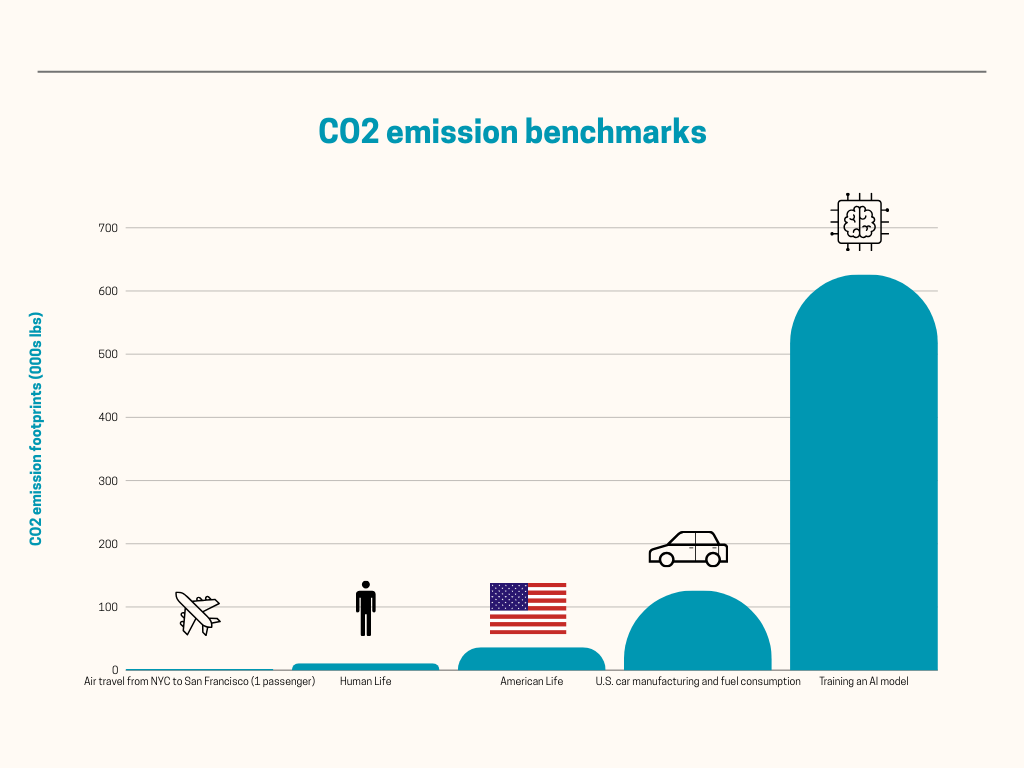Researchers estimate that, owing to the cooling processes required for the hardware, ChatGPT almost guzzles a full 16-oz bottle of water for every 5-50 prompts it’s fed.
FirstPost, 2024


Training the bigger, more popular AI models like GPT-3 produced 626,000 pounds of carbon dioxide, equivalent to approximately 300 round-trip flights between New York and San Francisco—nearly five times the lifetime emissions of an average car.
The Sustainable Agency
AI and the environment are deeply interconnected in both promising and problematic ways! On one hand, AI has the potential to support environmental sustainability through smarter energy systems, climate modeling, conservation efforts, and more efficient resource management. On the other hand, training large AI models consumes significant energy and resources, contributing to carbon emissions and environmental strain. It is important that we are aware of how we are using AI and how each interaction has its ripple effects in the world whether we see it or not.
Here are a few interesting reads to engage with to learn more!
UN Environmental Program: SDGS, AI & the Environment
The Economist: How AI Could Help the Environment
Harvard Business Review: The Uneven Distribution of AI Environmental Impacts
Scientific American: AI’s Climate Impact Goes beyond Its Emissions

If you’re passionate about the environment, sustainability, or even just curious about the ethical role of technology in shaping our planet’s future, there’s an incredible community at Tufts you should know about.
The Lantern @ Tufts is a student-led think tank that sparks thoughtful conversations and interdisciplinary collaboration on pressing global issues especially at the intersection of environmental justice, ethical innovation, and inclusive systems design.
Whether you care about climate change, responsible AI, or building more equitable communities, The Lantern offers a space to connect with others who are asking the same questions and working toward real solutions!